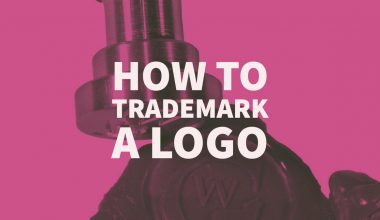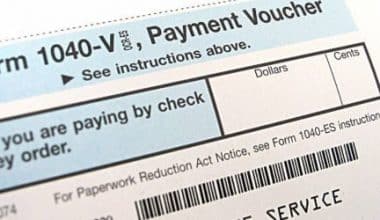As you may be aware, products are distributed to consumers through a variety of processes involving manufacturers and sellers. Have you ever considered what would happen if merchants sold these products at a lower price than the one set by the manufacturers? To address this issue, the Minimum Advertised Price (MAP) was created. That’s why we’ve written this article, which will explain everything you need to know about the meaning of the MAP pricing policy, Amazon retail enforcement, and how to calculate it. Let’s read this post to the end to get more information.
What is “Map Pricing”?
A Minimum Advertised Price (MAP) is a monetary value specified by the manufacturer as the lowest price at which merchants are permitted to advertise their products for sale. In other words, it is the set of prices that a brand or firm establishes for its products to persuade resellers not to offer their items at a lower price.
Because MAP pricing refers to advertised prices, the policy will not extend beyond that limit to include the retailer’s actual prices. It’s the lowest price they can show on the internet or in a print advertisement, not the lowest price in the store. For example, a company’s MAP pricing for house decorations is A dollar. You will not sell this product for less than A once you advertise it.
As a result, MAP pricing is completely permissible under antitrust rules in the United States because it serves as a form of protection for manufacturers. A manufacturer must thoroughly analyze its MAP pricing before deciding on an appropriate price. Reasonable pricing will protect the brand from degradation while also attracting new clients. You must be limited when advertising products with fixed MAP pricing. You can, however, offer such things at any price you like in your business.
The most misunderstood policy in industry or retail is the MAP pricing policy. Setting up MAP pricing, managing market prices, establishing a Minimum Advertised Price policy, and preventing infractions are all common challenges for brands.
What Is Map Pricing in Retail?
We’ll compare MAP pricing to what’s known as the Manufacturer’s Suggested Retail Price (MSRP) (MSRP). If you’re wondering, these two rules are vastly different and do not target the same objectives for product makers. MAP pricing, fortunately, will support MSRP and vice versa.
What is MSRP?
MSRP, or Manufacturer’s Suggested Retail Price, is a policy that specifies the price that manufacturers recommend. This is the suggested retail price for the products by the manufacturers.
The majority of shops offer products at the manufacturer’s suggested retail price. As a result, even without any discounts, shoppers will discover that they are purchasing items at a reduced cost. To minimize misunderstandings, we must dig into its key purposes, just like we did with MAP pricing:
- Its initial purpose is to balance a product’s retail price via the business channel while also safeguarding the retailer’s interests.
- The next step is to determine a price that takes into account all of the costs associated with the product’s retail. As a result, all businesses involved in the sale will undoubtedly profit.
- Finally, MSRP pricing aids in the prevention of brand erosion. The MSRP protects the company’s reputation while also ensuring that its selling prices are appropriate for a high-quality brand.
MSRP vs. MAP pricing
The difference between MAP and MSRP pricing is significant. One of the most significant distinctions is the way these two policies are implemented. To be more clear, we said earlier that MAP pricing only relates to the “advertised” price, while retailers only market manufactured products. Whereas MSRP pricing shows the price at which the sellers expect their items to be sold in the market, the price at which the operators recommend their retailers sell the product is the price at which the operators recommend their retailers sell the product.
You’re constrained when it comes to advertising products with predetermined MAP pricing. When it comes to MSRP, however, there appears to be no restriction for vendors trading their products on the market. As a result, as a retailer, you have complete freedom to establish any price you choose.
MSRP shows a manufacturer’s partners the price it expects them to sell their items for. Because the MSRP has already provided them with a signal, MSRP retail partners will feel more comfortable determining their price for sale at the MSRP level. It demonstrates that their market competitors may face fines for deviating from the suggested retail pricing.
Map Pricing Policy
Implementing a MAP policy that encourages price consistency can help brands that supply their products to retailers and other resellers. As the number of internet channels grows, more companies are implementing them to safeguard their reputations.
A minimum advertised price (MAP) pricing policy specifies the lowest price a distributor or retailer can advertise a product for outside the shop. These policies typically include incentives for corporations to comply with the conditions and punishments in the event of a policy violation.
Suppliers can penalize distributors who breach MAP policies according to agreed-upon terms or simply terminate contracts if they do so, as this is not illegal in and of itself.
Manufacturers have traditionally issued a “Manufacturer’s Suggested Retail Price” (MSRP), sometimes known as a “Recommended Retail Price” (RRP). Because of this strategy, retailers were able to set their prices. A television with an MSRP of $400 may be promoted by the retailer as a 25% discount with a selling price of $300. With a MAP policy, however, this is not possible.
What Happens if a Retailer Sells Below the MAP Price?
If a merchant advertises a product at a price less than the minimum advertised price, brands have the legal right to pull their products from that retailer and limit future sales. When their supply is depleted, they can simply refuse to replace it. When creating a trustworthy relationship, it’s best to stick to the MAP price.
Because MAP rules restrict advertised prices rather than the final sales price, they are allowed in the United States under federal antitrust law. Minimum advertised pricing, on the other hand, is seen as a violation of current competition laws in the EU and the UK. In reality, authorities in the United Kingdom and Australia have fined several firms for attempting to implement MAP rules in those countries.
Map Pricing Amazon
If you’ve ever sold anything on Amazon (or any other marketplace), you’re probably familiar with MAP (minimum advertised pricing). There are a few reasons why Amazon sellers don’t always adhere to the MAP pricing policy. However, there may be more to this law than meets the eye, so we’ve put up a quick rundown for you.
Knowing this is crucial to running a successful Amazon Marketplace business.
92 percent of online customers compare prices. MAP is a hot topic. It’s critical to understand what MAP is and isn’t, whether you’re a first-time Amazon seller or a seasoned retail veteran. This important policy, along with the product listing, stock count, price, tax, and so on, must be kept up to date. If you don’t, it could hurt your business as a retailer or your brand as a distributor.
Map Policy Enforcement
MAP policyholders and IP managers would do well to consider MAP pricing enforcement techniques as an important aspect of keeping their MAP policy in place. According to research, MAP policy enforcement has been demonstrated to promote compliance. The greatest options for enforcing MAP pricing are shown below.
#1. “Cease and desist” letter
Cease-and-desist letters are an effective way to send a firm message to vendors who violate MAP policies; to prevent MAP infractions. However, because the document isn’t filed in court, it can only be used to warn violators that legal action will be taken if they don’t comply. In any event, the letter should state the policy that has been broken and the steps that will be taken to enforce it.
#2. Create rules for your sales and distribution channels.
Developing clear compliance rules for your distributors and retailers simplifies MAP pricing oversight and enforcement. Notify and remind your resellers that the MAP policy benefits both your firm; the resellers in terms of profit margin protection.
Amazon’s trademark registry
When you collaborate with Amazon to advertise your items directly or indirectly through resellers; the Amazon Brand Registry is a terrific tool to enforce your MAP pricing. Brands can use the tool to provide Amazon with more information about their products and intellectual property; allowing both brands and Amazon to better guard against infringement.
The Brand Registry procedure allows brands to limit the number of merchants who can sell their items on the site. You can also request invoices from vendors that identify the source of your products’ distribution. As a result, you’ll be able to identify distributors who aren’t following the MAP policy and take MAP enforcement action against them.
Monitoring of MAP infractions
Automated pricing tracking and enforcement is an excellent approach to prevent problems from escalating into major issues. Technology-based solutions relieve you of the burden of MAP policy enforcement and are far more efficient than single-case techniques.
How to Calculate Map Pricing
When a corporation sets a price of $27 for their best-selling lasagna pan, every reseller (including Amazon) is compelled to advertise the cost of that pan for $27 or more; which is an example of MAP pricing on Amazon. The reseller would be in direct breach of the MAP agreement if they chose to promote the lasagna pan at a $20 discount.
MAP policies can be a perplexing subject, full of math and other complications. Fortunately, there are strategies to stay competitive and ahead of the competition; so you can sell your items without fear of losing money.
Typically, you can calculate MAP pricing by subtracting 20% from the most recently published (or established) Manufacturer Suggested Retail Price (MSRP). Let’s use the lasagna pan company as an example. Let’s say their best-selling lasagna pan is $40. The MAP would therefore be $32 ($40 x 20% = $8; $40 – $8 = $32). Keep in mind that this is merely a generalization, and each distributor may have its MAP formula.
Consistent pricing preserves the intellectual property of the brand and gives a clear message to purchasers about the product’s (and the reseller’s) worth.
What Does Map Represent in Terms of Selling?
The term “minimum advertised price” (MAP) (not to be confused with MSRP). The crucial term here is “recommended”; manufacturers can only suggest a minimum advertising price; they cannot fix their prices. It’s the lowest recommended price that a distributor can advertise a product for without incurring manufacturer fines.
How Do Map Pricing Regulations Work?
A MAP policy establishes the lowest possible price at which a distributor or retailer may promote a product outside of the shop. These policies typically include penalties for breaking the rules, as well as incentives for businesses to abide by the rules.
Why Is Map Pricing Crucial?
The minimum price at which a store may market a specific product is known as the minimum advertised price or MAP. By preventing the products from being sold for less than a certain sum, MAP pricing, which is established by the manufacturer, helps safeguard the brand’s value and revenues.
What Does Map Mean in Terms of Amazon?
The lowest sale price that a manufacturer will permit for its items to be advertised or put up for sale is known as the Minimum Advertising Pricing or MAP. MAP policies are typically developed by manufacturers to outline all the requirements that retailers must meet when it comes to the minimum advertised price.
Conclusion
MAP pricing is a court-created rule that governs the interaction between producers and retailers; as well as their agreement on a minimum advertised price. Both sides, in particular, and the retail business in general, benefit from MAP pricing rules.
We hope you find this post helpful and instructive as you investigate the meaning of the MAP pricing policy, Amazon retail enforcement, how to calculate it; anything else you need to know about it.
Map Pricing FAQs
Is MAP pricing legal in the United States?
Antitrust laws in the United States make MAP programs fully legal. Such policies have been in place since 1919, over a century! A MAP policy isn’t regarded as vertical price-fixing as long as a manufacturer or supplier acts independently from its resellers.
Is MAP pricing legal in Canada?
Manufacturers can now ensure that all online and brick-and-mortar stores maintain an agreed-upon minimum price, ensuring fair competition across all channels and giving you more options now that Minimum Advertised Price (MAP) and Minimum Resale Price (MRP) agreements are legally enforceable in both Canada and the United States.
How do you enforce a MAP Pricing in Amazon?
- Identify and track key distribution and retail buyers.
- Sending a letter of cease and desist.
- Serialization of products.
- Make a product warranty available.
- Include a clause in your contract that prohibits digital sales on Amazon.
- Become a member of the Amazon Brand Registry.
- Make use of a price monitoring service.
Can a retailer charge more than MSRP?
The phrase “recommended” is crucial. A retailer has complete control over the retail price of the goods it offers. A dealer can set the price at the MSRP or a different price as long as the choice is made independently by the dealer. The manufacturer, on the other hand, has the option of refusing to work with distributors who do not adhere to the MSRP.
Related Articles
- Buyer’s Journey: Meaning, Stages & How to Implement in Sales Process
- Stakeholder Mapping: Guide to the Mapping Tool for Effective Stakeholder Management
- Competitive Pricing: How to Do Competitive Pricing Analysis
- Stakeholder Analysis: Definitive Guide To The Stakeholder Analysis Process
- Financial Intelligence: Babysteps to Proper Mastery (+ How to guide & Detailed courses))






